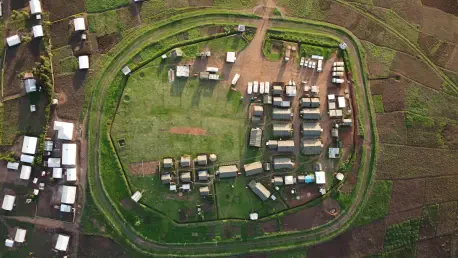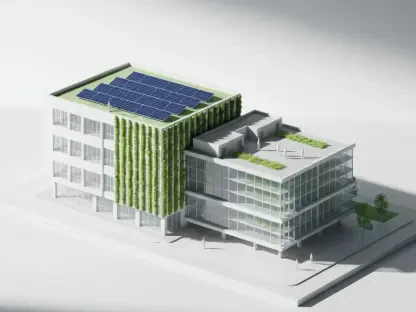As a leading figure in construction and urban planning, Luca Calarailli has been at the forefront of innovative housing developments, blending design expertise with a passion for technological advancements. In this conversation, we’ll explore the strategic elements behind the recently approved phase of a monumental housing project in Bexhill-on-Sea. The discussion will illuminate how this development aims to meet local housing needs, integrate green infrastructure, and create sustainable communities.
Can you share more about the significance of securing planning approval for the final phase of your Bexhill-on-Sea development?
Securing approval is indeed a crucial milestone for us. It provides the green light to proceed with delivering high-quality homes that the local community can benefit from. This final phase is part of our vision to complete the Bexhill project, which is integral to our long-term commitment to addressing regional housing demands. It allows us to finalize a robust plan that involves a variety of housing options and enriches community living through sustainable design.
How does the Bexhill development contribute to the housing demand in East Sussex?
This development provides a significant influx of new homes, tackling the region’s pressing housing needs. By introducing a mix of affordable and market-value homes, it ensures a broad spectrum of options for different demographics. Our aim is to balance supply with local demands, offering suitable housing for a diverse population while boosting the region’s housing stock.
Could you elaborate on the mixed-tenure approach in the Bexhill development?
The mixed-tenure model is pivotal in offering flexibility and inclusivity. By integrating affordable rent, shared ownership, and open market sales, we cater to varying financial capabilities, promoting a balanced community. This approach not only supports local residents in accessing affordable housing but also enhances economic mobility within the community.
What types of homes are included in the 87 affordable homes within the final phase?
The 87 affordable homes comprise both apartments and houses, allowing for a diverse range of living preferences. This mix is designed to accommodate different family sizes and encourage broader demographic coverage. By providing a variety of housing types, we aim to create a vibrant, inclusive neighborhood.
How will these homes be distributed between affordable rent and shared ownership?
Of the 87 homes, 31 are allocated for affordable rent, and 56 are for shared ownership. This distribution reflects our strategy to address various affordability levels, supporting both those who need immediate rental solutions and those aspiring to gradually own a home. It ensures broader access to housing while fostering long-term stability and investment in the community.
Why was the partnership with CBRE Investment Management chosen for the affordable homes?
CBRE Investment Management’s commitment to delivering high-quality, affordable housing aligns perfectly with our goals. Their strategic outlook on sustainability and community building matches our vision for the Bexhill project. Collaborating with a partner of such caliber ensures that our affordable housing goals are accomplished with expertise and a shared long-term vision.
How do Vistry’s Bovis and Linden Homes brands fit into the overall project plan?
Bovis and Linden Homes offer distinct yet complementary market options, crucial for achieving our multi-tenure community vision. They bring in diverse architectural styles and quality assurances that align with the project’s high standards. These brands enable us to provide a wide range of housing solutions, appealing to different buyer demographics and preferences.
When are the enabling and infrastructure works expected to begin for this final phase?
We anticipate starting the enabling and infrastructure projects later this year. These initial steps are essential to lay the groundwork for subsequent building and development activities. It’s a well-coordinated timeline that aims for the first homes to be ready by 2026, ensuring a smooth progression aligned with our planning objectives.
What energy-efficient features have been integrated into these new homes?
The homes are designed with sustainability at the forefront, incorporating advanced energy-efficient features like enhanced insulation, low-energy lighting, and efficient heating systems. Our goal is to not only reduce energy consumption and minimize environmental impact but also to lower utility costs for future residents, promoting both ecological responsibility and affordability.
Can you elaborate on the green infrastructure and placemaking elements included in the development?
Our commitment to green infrastructure involves extensive networks of walking and cycling paths, as well as strategically landscaped open spaces. These elements not only enhance the aesthetic appeal but also promote a healthier, active lifestyle. The aim is to foster a sense of community and connection with nature, supporting well-being and social interaction among residents.
How will the development’s new and existing open spaces, walking and cycling routes benefit the community?
These amenities are designed to encourage active transportation and leisure, contributing to the health and well-being of residents. The connectivity of these spaces also fosters inclusivity, ensuring all community members can access local resources easily. By linking homes to public areas, we encourage stronger community bonds and a more cohesive neighborhood environment.
In what ways does this project support the creation of a sustainable new community?
Our focus on integrated sustainability initiatives—ranging from energy-efficient homes to thoughtful green space design—paves the way for long-term environmental stewardship. By prioritizing these elements, the project promotes ecological balance and resilience, creating a community that is not only sustainable but also self-sufficient in the long run.
How does this project align with the long-term plans for housing growth in the region?
The project is a strategic component of broader regional development plans, intended to meet growing housing demands while ensuring environmental and economic sustainability. It’s designed to provide scalable solutions adaptable to future needs, effectively supporting the regional vision of controlled, inclusive growth and reinforcing the area’s capacity to accommodate future populations.
What challenges did Vistry face during the planning approval process, if any?
Navigating planning approvals often involves addressing diverse stakeholder concerns, including environmental impact assessments and community consultations. Fortunately, our dedication to comprehensive planning and transparent communication has facilitated smoother approval processes. We endeavor to engage collaboratively with local councils and communities to ensure mutual trust and alignment with local objectives.
How does the partnership with CBRE Investment Management enhance the project’s ability to deliver affordable housing?
Their expertise in property investment and management significantly boosts our capability to deliver on our affordable housing promises. By leveraging their resources and insights into market demands, we can craft smarter strategies for the distribution and quality of affordable housing. This partnership also amplifies our collective impact, aligning with our mission to mitigate the affordable housing shortage.
Could you discuss the institutional capital deployment strategies used to address the undersupply of affordable homes?
We employ strategic investment approaches that leverage institutional capital efficiently, targeting high-impact developments. This involves deploying resources where they are most needed, ensuring that investment into affordable housing generates meaningful community benefits while balancing the financial returns required by our investors.
What impact does the Bexhill development have on local services and amenities in the area?
The development enhances local infrastructure, potentially increasing demand for public services yet providing incentives for their growth. By expanding the housing landscape, we encourage improvements in transportation, healthcare, and education facilities. This ripple effect supports a robust civic structure, enhancing the community living standard while attracting further regional investment.
How has the collaboration between Vistry and CBRE Investment Management evolved over past projects?
Our collaboration has matured into a strategic alliance based on shared values and mutual goals. Over previous projects, we have fine-tuned our collective expertise and operative synergy, leading to more efficient and impactful housing solutions. This evolution has been instrumental in tackling complex challenges and achieving significant breakthroughs in affordable housing delivery.
Can you explain the importance of generating long-term, stable returns for investors in such housing projects?
Ensuring steady returns is crucial for sustaining investment flow into affordable housing. By demonstrating reliable financial performance, we attract and maintain investor interest, enabling continuous project funding and expansion. These stable returns also pave the way for balancing social objectives with economic realities, ensuring affordable housing projects remain viable and attractive opportunities.
How does Vistry plan to ensure that the new homes meet the needs of local people?
We prioritize engagement with local stakeholders to maximize understanding of community needs, ensuring that our developments reflect these insights. Our designs are informed by extensive market research and community feedback, aiming to provide homes that are both accessible and desirable. This strategy not only addresses existing demand but also anticipates future preferences, fostering long-term community satisfaction.
What is your forecast for this sector in the coming years?
Looking ahead, I foresee a continued emphasis on sustainability and technology integration as cornerstones of future developments. As housing demands evolve, the industry will likely leverage advanced technology to create more adaptable, resilient communities. Sustainable practices will remain central, driving innovation and collaboration across sectors to address the growing needs of urban populations responsibly.









